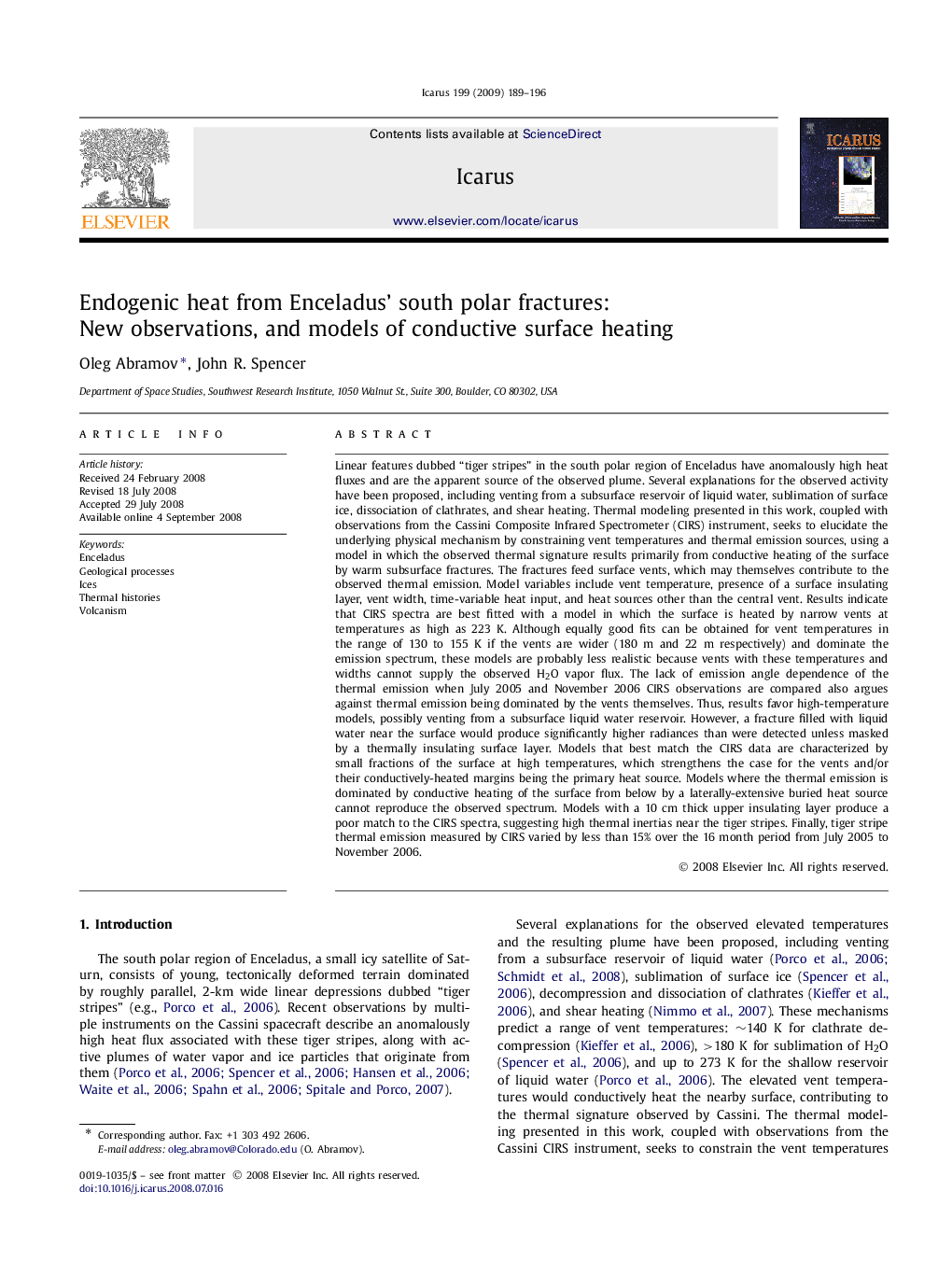| کد مقاله | کد نشریه | سال انتشار | مقاله انگلیسی | نسخه تمام متن |
|---|---|---|---|---|
| 1774848 | 1021176 | 2009 | 8 صفحه PDF | دانلود رایگان |

Linear features dubbed “tiger stripes” in the south polar region of Enceladus have anomalously high heat fluxes and are the apparent source of the observed plume. Several explanations for the observed activity have been proposed, including venting from a subsurface reservoir of liquid water, sublimation of surface ice, dissociation of clathrates, and shear heating. Thermal modeling presented in this work, coupled with observations from the Cassini Composite Infrared Spectrometer (CIRS) instrument, seeks to elucidate the underlying physical mechanism by constraining vent temperatures and thermal emission sources, using a model in which the observed thermal signature results primarily from conductive heating of the surface by warm subsurface fractures. The fractures feed surface vents, which may themselves contribute to the observed thermal emission. Model variables include vent temperature, presence of a surface insulating layer, vent width, time-variable heat input, and heat sources other than the central vent. Results indicate that CIRS spectra are best fitted with a model in which the surface is heated by narrow vents at temperatures as high as 223 K. Although equally good fits can be obtained for vent temperatures in the range of 130 to 155 K if the vents are wider (180 m and 22 m respectively) and dominate the emission spectrum, these models are probably less realistic because vents with these temperatures and widths cannot supply the observed H2O vapor flux. The lack of emission angle dependence of the thermal emission when July 2005 and November 2006 CIRS observations are compared also argues against thermal emission being dominated by the vents themselves. Thus, results favor high-temperature models, possibly venting from a subsurface liquid water reservoir. However, a fracture filled with liquid water near the surface would produce significantly higher radiances than were detected unless masked by a thermally insulating surface layer. Models that best match the CIRS data are characterized by small fractions of the surface at high temperatures, which strengthens the case for the vents and/or their conductively-heated margins being the primary heat source. Models where the thermal emission is dominated by conductive heating of the surface from below by a laterally-extensive buried heat source cannot reproduce the observed spectrum. Models with a 10 cm thick upper insulating layer produce a poor match to the CIRS spectra, suggesting high thermal inertias near the tiger stripes. Finally, tiger stripe thermal emission measured by CIRS varied by less than 15% over the 16 month period from July 2005 to November 2006.
Journal: Icarus - Volume 199, Issue 1, January 2009, Pages 189–196